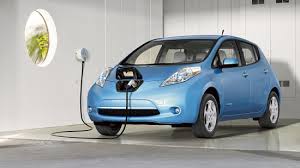One of the major obstacles to people buying EVs (electric vehicles) and PHEVs (plug- in hybrids) is the purchase price. The following table shows the problem:

Basically they are the same car but with different powertrains. However, the Leaf has some superior luxury equipment on board compared with the Pulsar and has better acceleration, especially from a standing start.
The conventional way to work out whether it is worth paying an extra $12,000 for the Leaf is to do a ‘simple payback’ calculation. That approach calculates how many years it will take until the petrol saved equals $12,000 (less the cost of electricity). The main problem with this approach is the assumption that petrol will stay the same price over that number of years. No consideration is given to other factors.
Another approach is to consider what can be called ‘Monthly Cost of Ownership (MCO)’. This leads to quite a different result. It is based on the concept that people budget for monthly car payments.
To purchase a Leaf, a leading car website offers finance through a broker at 7% for 5 years, $0 deposit, with a balloon payment at the end of 40%. That translates to $520 per month. Using the same parameters, the Pulsar ST-S is available for $391 per month.
During operation, the Leaf will use electricity (assume GreenPower) at a cost of around 5.8c/km while the Pulsar will use petrol at a cost of around 16c/km. How many km does a driver have to go, per month, to break even? Graph 1 shows this calculation which is then explained below.

The GreenPower line assumes using 100% renewable energy which includes the small extra cost: most electricity retailers charge an extra 5c/kWh for 100% GreenPower. Alternatively, a savvy driver could buy offsets through STCs, LGCs, Greenfleet, the ATA’s C3 or other offset methods to eliminate emissions from their energy usage.
The PV (PhotoVoltaics, i.e. solar panels) line assumes that the person can put enough charge into their car during daylight to keep them going until the next time they need to re-charge. PV at home is free. PV-linked EV-charging facilities will also be provided by increasing numbers of shopping precincts – IKEA, for example, already offers this service at some of its stores’ parking areas, charged from PV on their roofs. (It makes a lot of sense to keep a person charging their car for free while they linger in the store).
The MCO approach shows that if a car owner has access to free PV, then the Monthly Cost of Ownership of a Leaf will be lower than the Pulsar if they drive more than 800 km per month. If the car owner charges exclusively from the grid using GreenPower, the breakeven point is around 1,000 km per month. Since the average distance driven by Victorians is 1,400 per month, these savings are within reach of the majority of drivers.
These figures do not include the costs of insurance or vehicle registration which are highly variable per location/person. The figures do not include the costs of maintenance either. In all of these cases, the costs for the Leaf should be less than the Pulsar, further easing the breakeven point.








